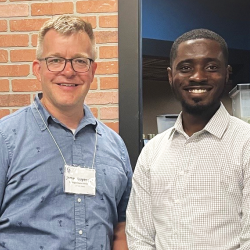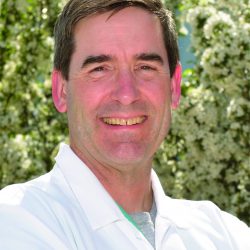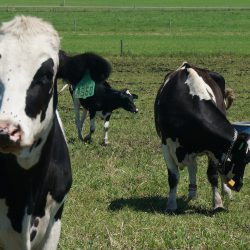“I was first introduced to research as a biology undergraduate at Towson University. I joined a plant ecology lab as a student research assistant and had the opportunity to go to Alaska and do research on how climate change was affecting plant ecology and small mammal populations in the tundra. That’s where I fell in love with asking questions and searching for impactful new information,” says Lilly Conteh.
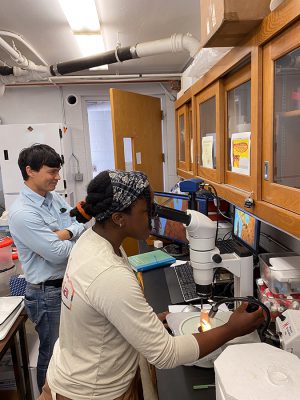
Now a third-year student in the MSU College of Veterinary Medicine’s DVM/PhD dual-degree program, Conteh is combining her research interests with her passion for clinical care. This summer she participated in the USDA Veterinary Research Scholars Program (VSRP) and began an investigation into how the Cache Valley virus is transmitted among small ruminants in Arkansas. She is mentored by Dr. Lee Cohnstaedt, a research entomologist with the US Department of Agriculture (USDA).
Embracing Multiple Career Interests
Conteh knew she loved to ask questions and find answers, but research wasn’t the only area this applied.
“I always loved working with large animals—I grew up riding horses,” says Conteh. “As I was getting ready to graduate, I thought ‘Hey, let me try working at a veterinary clinic’. It was something I’d always been interested in. That experience—along with my undergraduate research and experiences I had traveling to diverse agricultural communities in Tanzania and Thailand—cemented my interest in veterinary medicine and its impact on global animal, environmental, and human health.”
Conteh’s trips to Tanzania and Thailand were made as a GIVE volunteer and as a participant in Loop Abroad—an international pre-veterinary opportunity—respectively.
“I was exposed to the ways different communities raise their livestock and the various disease, economic, and social implications that result from differing livestock practices—that was incredibly eye opening. I believe that, in addition to our focus on science, veterinarians should be social scientists. That’s something I want to bring forth in my work. At the root of all of this is people, and people make decisions and have different perspectives based on a lot of factors—including culture.”
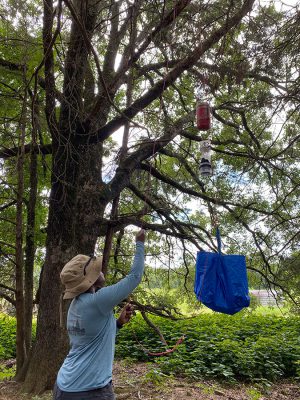
Conteh’s interest in a combined DVM/PhD was sparked by Dr. Roxann Motroni, her mentor since completing her undergraduate degree. Motroni is the animal production and protection national program leader at the USDA and holds a DVM and a PhD in Comparative Pathology.
“Dr. Motroni is a mentor of mine to this day, and she’s the one who inspired me to go for a combined degree program,” says Conteh. “Pursuing this program aligned with what I want to do as a veterinarian. I really love clinical medicine, but I also love research surrounding public health, global health, and regulatory medicine—it is the perfect combination of working with people and animals to collaboratively improve health for everyone. I felt like having a DVM and a PhD would give me the skillset to obtain a career like that.”
Motroni helped Conteh find her current research project and encouraged her to apply to VSRP. Conteh had already been considering the program after hearing about it at conferences, so having found the perfect project, she applied.
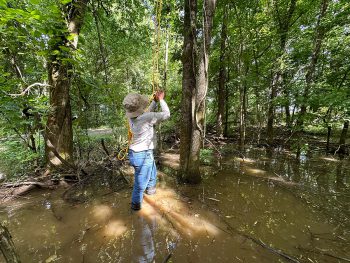
“It was an incredible experience. Science should be collaborative, and working with such a diverse group of experts was really inspiring. I believe that bringing different perspectives together is how you’re going to be able to better solve problems,” says Conteh.
In Kansas, she was able to meet and collaborate with staff at the USDA National Bio and Agro-Defense Facility, including professionals in animal research, geospatial analysis, environmental science, and entomology.
A Big Bite of Mosquito Research
“Cache Valley virus is spread by mosquitoes and poses a threat to public health and small ruminant reproduction. In sheep and goats, if a pregnant ewe or doe is infected, it can lead to reproductive complications, like abortion or congenital abnormalities. This a serious concern for farmers, and the virus can be transmitted to humans as well,” Conteh explains.
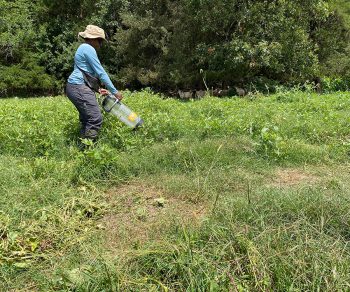
Cache Valley virus remains understudied, and scientists are still unsure which mosquito species are the main culprits for spreading the virus. It’s suspected that white-tailed deer serve as the reservoir host—the animal that maintains and amplifies the virus in the environment. However, this isn’t confirmed and may vary by region.
So, Conteh’s mission is to trap, test, and analyze mosquitos from different areas of the Dale Bumpers Small Farms Research Center in Booneville, Arkansas. She’s testing for Cache Valley virus to determine which mosquito species may be primary vectors. Then, Conteh will analyze the mosquito blood meals to learn more about their host preferences and feeding patterns. She’s also looking at how weather patterns affect mosquito distribution and virus transmission.
"I didn't know this before the summer, but different mosquito species have distinct characteristics that influence how they transmit disease—things like their habitat preference and host range," she says.
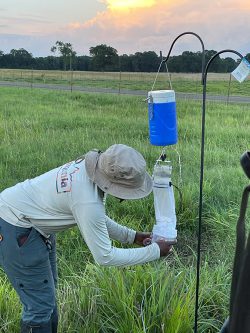
Even though her summer with VSRP is over, Conteh is staying on the project for the next couple of years and will continue the research as part of her PhD research.
“This is my dream project. It has everything I’m passionate about—livestock health, wildlife health, public health, and the environment—all connected through disease vectors. It aligns perfectly with everything I want to do,” says Conteh.
Looking ahead
After graduation, Conteh hopes to work with diverse groups of people, possibly around the world.
“Addressing animal health and public health—a lot of it involves policy and regulatory work, but at its core, it’s about working with people and understanding that different cultures may have different goals and perspectives. By embracing these differences, we can create sustainable and translational solutions to global health challenges.”

